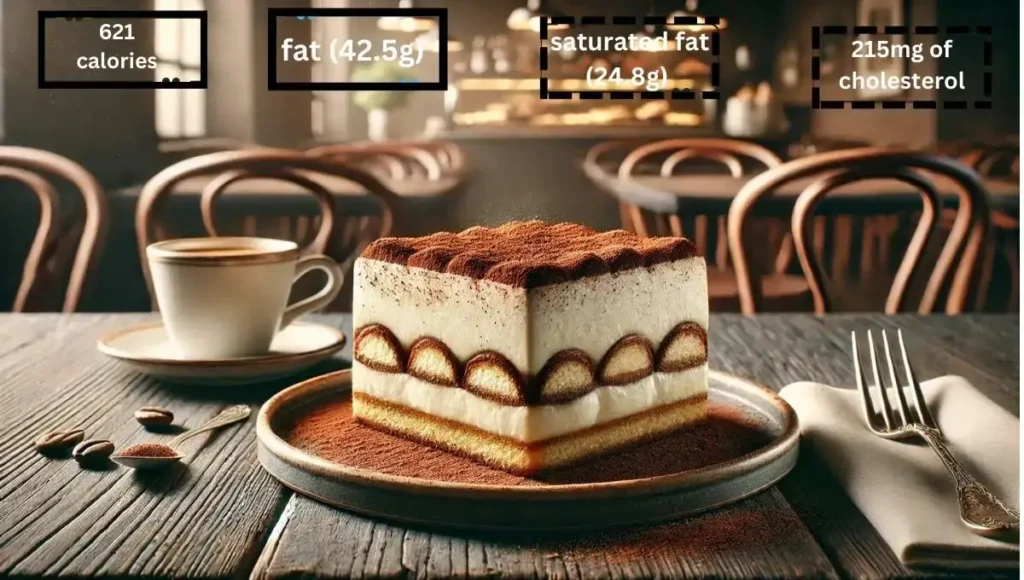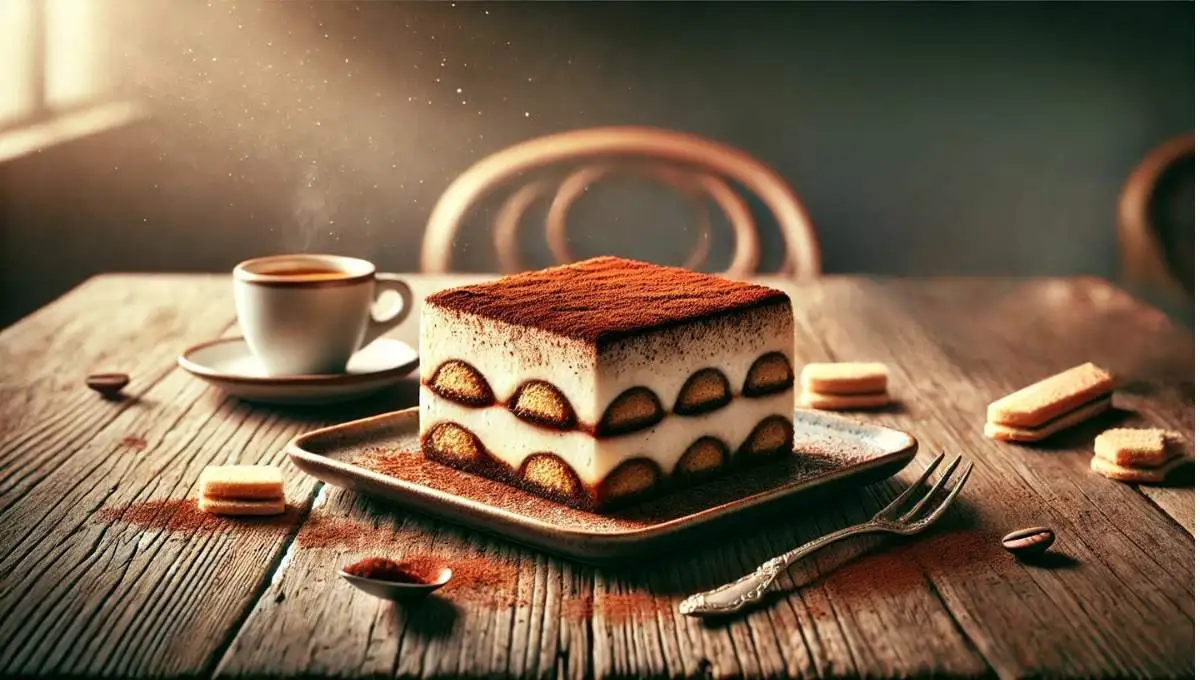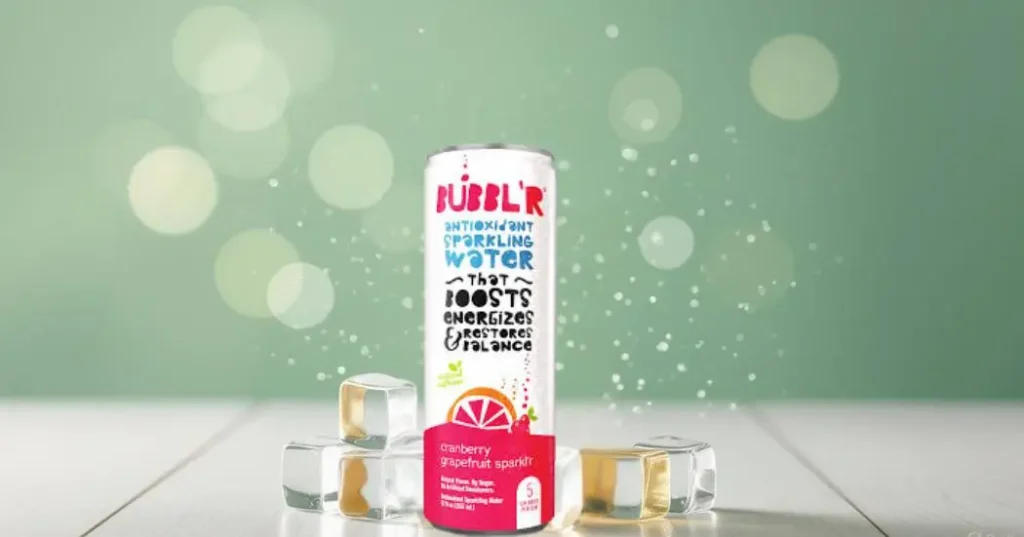When you think of Tiramisu, its bold, rich essence and coffee-scented layers come to mind, making it a timeless favorite for dessert enthusiasts everywhere. This classic Italian indulgence is known as the king of desserts, blending creamy mascarpone, delicate ladyfingers soaked in classic espresso, and a dusting of cocoa for a truly delicious treat. Whether you’re enjoying it at a fine dining experience or a casual dinner, its sweet charm caters to both caffeinated lovers and those who prefer a caffeine-free version.
For those sensitive to caffeine, it’s important to know that the amount varies by recipe. A typical serving of Tiramisu contains 65–90 mg, which is comparable to a small cup of coffee. This provides a mild energy boost without feeling overwhelmed. If you’d rather skip the caffeine, there are versatile recipes that use alternatives to cater to everyone’s preferences, proving that Tiramisu is truly a unique dessert offering a variety of possibilities.
What Is Tiramisu?
Tiramisu is a classic Italian dessert loved by dessert enthusiasts worldwide for its timeless charm. The name “pick me up” reflects its ability to provide a mild energy boost, thanks to its coffee-scented layers and creamy mascarpone filling. This delicious treat is created with delicate ladyfingers soaked in classic espresso, layered with rich mascarpone, and finished with a dusting of cocoa. Its bold, rich essence and sweet flavors make it the king of desserts.
Whether enjoyed as a casual dinner dessert or served at a fine dining table, Tiramisu’s versatility is what makes it unique. It appeals to those who love caffeinated treats while also offering caffeine-free versions for those who prefer alternatives. This beloved indulgence showcases a blend of traditional ingredients, providing a variety of possibilities for everyone to savor.
Fun Facts About Tiramisu!
Does Tiramisu Have Coffee or Caffeine?
Yes, tiramisu contains both coffee and caffeine. Traditional tiramisu uses espresso-soaked ladyfingers, which means each serving contains approximately 25-30 mg of caffeine, about one-quarter the amount found in a cup of coffee.
Tiramisu, a beloved Italian dessert, inherently includes coffee. The key to its distinctive flavor and mild energizing effect lies in the ladyfingers, which are typically soaked in strong espresso. This coffee infusion introduces caffeine to the dessert.
The amount of caffeine in a serving of tiramisu can vary. Factors influencing caffeine content include the strength of the espresso used, the duration the ladyfingers are soaked, and the serving size.
For those seeking a coffee-free alternative, there are variations of tiramisu that use ingredients like decaffeinated coffee, fruit juices, or cocoa.
The Origin of Tiramisu
The origin of Tiramisu lies in its classic Italian roots, where it emerged as a beloved dessert cherished for its bold, rich essence and unique ability to “pick me up.” Traditionally crafted in the Veneto region of Italy, Tiramisu became the king of desserts, blending coffee-scented layers, creamy mascarpone, and delicate ladyfingers soaked in classic espresso, topped with a dusting of cocoa.
Its timeless charm reflects Italian culinary artistry, offering a delicious treat enjoyed at both casual dinner tables and fine dining menus. Over time, Tiramisu’s versatility has allowed for the creation of caffeine-free versions, catering to all preferences. Whether as a nod to tradition or a modern twist, this sweet indulgence remains an icon of Italian cuisine.
Traditional vs. Modern Tiramisu Recipes
Traditional Tiramisu recipes
Traditional Tiramisu recipes remain true to their classic Italian roots, showcasing the timeless charm of delicate ladyfingers soaked in bold, rich espresso, layered with creamy mascarpone, and topped with a dusting of cocoa.
This delicious treat, often referred to as the king of desserts, has been a favorite at fine dining menus and casual dinner tables alike. Its simplicity and use of authentic ingredients create a sweet indulgence that highlights its versatility while staying true to its origins.
Modern Tiramisu recipes
Modern Tiramisu recipes, however, explore a world of creativity. From caffeine-free versions for those who are sensitive to caffeine to innovative flavors like chocolate, fruit, or even matcha, these recipes offer a variety of possibilities. Whether you follow the traditional charm or experiment with new flavors, Tiramisu continues to be a delightful treat for all dessert enthusiasts.
Alternatives to Caffeine in Tiramisu
For those with caffeine sensitivity, there are many alternatives to enjoy Tiramisu without worry. A Decaf Delight swaps regular espresso for decaffeinated coffee, while a Fruity Twist uses fruit purees or liqueurs for flavor.
If you love the dessert’s richness but want to avoid caffeine altogether, try a chocolate Tiramisu. According to the USDA, a 175 grams slice of Tiramisu contains about 59.5 mg of caffeine, offering a range of options for every preference while keeping its timeless treat appeal intact.
Does Tiramisu Have Caffeine?
Tiramisu recipes often include caffeine, sourced from coffee, usually in the form of strong espresso. The ladyfinger cookies are dipped into this coffee, allowing them to absorb both its flavor and caffeine content.
While the amount varies depending on the recipe, a standard portion of Tiramisu typically contains around 65–90 mg of caffeine. This is similar to a small cup of coffee, offering a mild energy boost without feeling too overwhelming. It’s an indulgent treat that remains a favorite among coffee lovers.
How Much Caffeine Is in Tiramisu?
Wondering how much caffeine a single serving of tiramisu contains? The answer lies in two main ingredients: coffee (or espresso) and cocoa powder. These key players not only add a unique flavor but also provide a slight buzz.
A traditional slice of tiramisu typically contains around 65–90 mg of caffeine, which is comparable to a small cup of coffee or a strong cup of black tea. This makes tiramisu both a delightful dessert and a subtle pick-me-up.
| Caffeine Source | Details | Caffeine Amount |
| Coffee or Espresso | Amount varies depending on recipe | 63 mg per ounce |
| Cocoa Powder | Amount varies based on recipe and quantity | 5-10 mg per teaspoon |
Does Tiramisu Keep You Awake?
If you love tiramisu but worry about caffeine sensitivity, it’s important to consider how it might affect you. A typical serving of this dessert contains around 65–90 mg of caffeine, similar to a cup of coffee or strong tea.
For those who are sensitive to caffeine, enjoying a slice of tiramisu in the evening might not be the best idea, as it could keep you up at night. However, for most people, having tiramisu after dinner won’t stop you from enjoying a good night’s sleep.
Ingredients of Tiramisu

Tiramisu isn’t just about caffeine; it’s a dessert that’s deeply loved for its rich, creamy textures and bold flavors. The unique combination of ingredients makes it a beloved treat that naturally appeals to dessert lovers everywhere. With its classic charm and key elements, Tiramisu remains a delightful favorite among those who enjoy indulgent desserts.
Core Ingredients Behind the Flavor
Ladyfingers as the Base
Ladyfingers (or Savoiardi) are the foundation of Tiramisu. These oblong-shaped sponge cookies are light, airy, and have a slightly sweet flavor. Their porous texture absorbs the rich coffee mixture, making them the tender base of this iconic dessert.
Espresso for Bold Flavor
The bold, characteristic flavor of Tiramisu comes from espresso, which is freshly brewed, strong, and intensely flavored. This ingredient delivers both an energy boost and a complementary balance to the creamy sweetness of the dish.
Egg Yolks and Sugar for the Filling
The filling relies on egg yolks, which add thickening properties and lushness when beaten with sugar. This process creates a light, airy base for the decadent filling, ensuring the dessert’s luxurious texture.
Granulated sugar also provides just the right amount of sweetness, counteracting the slight bitterness from the coffee and cocoa powder.
Mascarpone and Cocoa Powder for Perfection
The creamy filling is enriched by mascarpone cheese, a decadent Italian cream cheese known for its silky texture and slightly tangy flavor, which perfectly balances the sweetness.
Tiramisu is finished with a dusting of unsweetened cocoa powder, the quintessential topping that adds a slightly bitter contrast and completes the dessert with a beautiful visual finish.
You May Also Like
- Does NOS Energy Drink Have Caffeine? Expert Guide (2025)
- Does Bubbl’r Sparkling Water Have Caffeine? Full Breakdown In 2025
- Does Elderberry Energy Drink Contain Caffeine? Complete 2025 Review
Additional Ingredients to Try
Adding Marsala wine, a sweet fortified wine from Sicily, or dark rum to the coffee mixture brings an extra depth of flavor and a subtle boozy kick to Tiramisu.
For an even more indulgent filling, whipped heavy cream can be folded into the mascarpone mixture, creating a lighter, airier filling with a luxurious texture that elevates this classic dessert.
Does Tiramisu Have Alcohol?
The debate over alcohol in tiramisu continues! While traditional recipes often include a splash of rum, Marsala wine, or coffee liqueur like Kahlúa, it’s not a strict necessity. The alcohol adds a warm depth of flavor that enhances the taste of this classic dessert.
For an alcohol-free version, simply skip the booze or replace it with non-alcoholic coffee flavoring or vanilla extract. This way, you’ll still enjoy the lovely taste of tiramisu without the alcohol content.
How to Make Tiramisu?
Combine and Mix Your Ingredients
First, gather your ingredients and beat the whipping cream while slowly adding the sugar to the mix. Then, incorporate the vanilla and amaretto, continuing to whisk until you see soft peaks develop. This forms the creamy, flavorful base for your tiramisu.
Add in Your Mascarpone Cheese
Once the soft peaks begin to form, gently stir in the mascarpone cheese until the mixture stiffens, creating the ideal texture for your tiramisu filling.
Dip Your Ladyfingers in the Coffee
Once your peaks begin to stiffen, dip the ladyfingers gently into the coffee and lay them carefully into an 8-inch square pan to create the first layer of your tiramisu.
Repeat the Process
After laying your first layer, spread half of the whipped cream mixture on top, then follow with a second layer of ladyfingers. Top with the rest of your whipped cream mixture. Chill in the refrigerator for 2 hours, sprinkle cocoa powder on top just before serving, and savor the treat!
Equipment
- 8-inch square pan
- Bowl
- Spoon
Ingredients
- 2 cups of espresso (room temperature)
- 14 ladyfinger biscuits
- 4 tablespoons of cocoa powder
- 1 cup of mascarpone cheese
- 1/3 cup of sugar
- 1 cup of heavy whipping cream
- 1 teaspoon of vanilla extract
- 1 tablespoon of amaretto liquor
These ingredients come together to create the perfect tiramisu, blending creamy textures and bold flavors for an unforgettable dessert.
Instructions
Beat the whipping cream and add the vanilla, sugar, and amaretto, then mix until soft peaks form. Afterward, blend in the mascarpone cheese until the mixture reaches stiff peaks. Dip the ladyfingers in the coffee and lay them in your pan to create the first layer. Add a layer of the whipped cream and repeat the process.
Once assembled, refrigerate the tiramisu for at least 2 hours. Before serving, dust it with cocoa powder and enjoy this delightful dessert!
Tiramisu Variations and Their Caffeine Content
Tiramisu has inspired numerous variants, each adding a unique twist to the original recipe. These popular versions bring creativity and flavor to this classic dessert, making it more versatile than ever.
While tiramisu has been enjoyed for a long time, there are many variations to try, some of which change the caffeine content. From fun twists on the traditional recipe to exciting and fresh adaptations, there’s a version of tiramisu for every taste.
Chocolate Tiramisu
This variation adds chocolate to the traditional recipe by incorporating cocoa powder into the mascarpone mixture or layering chocolate shavings between the ladyfingers. Since cocoa powder contains a small amount of caffeine—about 12 milligrams per tablespoon—the caffeine content in chocolate tiramisu is generally relatively low, but it may vary depending on the recipe.
Fruit Tiramisu
This variation adds chocolate to the traditional recipe by incorporating cocoa powder into the mascarpone mixture or layering chocolate shavings between the ladyfingers. Since cocoa powder contains a small amount of caffeine—about 12 milligrams per tablespoon—the caffeine content in chocolate tiramisu is generally relatively low, but it may vary depending on the recipe.
Tiramisu Cheesecake
This variation enhances the traditional recipe by incorporating cocoa powder into the mascarpone mixture or layering chocolate shavings between the ladyfingers. Since cocoa powder contains a small amount of caffeine—around 12 milligrams per tablespoon—the caffeine content in chocolate tiramisu is relatively low, though it may vary depending on the recipe.
Nutella Tiramisu
Nutella, the popular hazelnut chocolate spread, is often incorporated into the mascarpone mixture or spread between the layers of ladyfingers, adding a rich and indulgent flavor to the dessert. While Nutella contains a small amount of caffeine due to its cocoa content, it is generally negligible in the context of a tiramisu.
Vegan Tiramisu : A Plant-Based Alternative
Catering to plant-based diets, vegan tiramisu replaces traditional ingredients with substitutes like coconut cream or cashew cream instead of mascarpone cheese and dairy-free alternatives for eggs and milk.
The caffeine content in vegan tiramisu depends on the type of coffee substitute used. For example, using alternatives like chicory or dandelion root results in little to no caffeine, while decaf coffee may contribute residual caffeine of about 2-5 milligrams per 8-ounce serving.
Pumpkin Spice Tiramisu
Perfect for the fall season, this variant incorporates pumpkin puree and warm spices like cinnamon, nutmeg, and cloves into the mascarpone mixture, creating a cozy and flavorful dessert. Similar to chocolate tiramisu, the caffeine content in pumpkin spice tiramisu would be minimal unless coffee or espresso is included in the recipe.
Matcha Tiramisu: A Japanese Twist
Inspired by Japanese flavors, matcha powder is incorporated into the mascarpone mixture or dusted over the cocoa powder, giving the dessert a subtle green tea flavor and vibrant color. While matcha contains caffeine, the amount used in tiramisu recipes is usually relatively small, contributing about 30-40 milligrams per teaspoon of matcha powder.
Lemon Tiramisu
Bright and refreshing, lemon zest or lemon curd is incorporated into the mascarpone filling, adding a zesty citrus twist to the traditional dessert. Unless caffeinated ingredients are added, lemon tiramisu typically contains minimal to no caffeine content, making it a light and flavorful variation.
Are There Caffeine-Free Versions of Tiramisu?
Absolutely, you can indulge in tiramisu without stressing over caffeine! While traditional tiramisu is typically coffee-flavored, there are clever ways to create a caffeine-free version for those who need to avoid it.
Decaf Coffee:
Simply swap out regular coffee or espresso for decaffeinated versions. This allows you to enjoy the rich coffee flavor without the caffeine kick. Decaf coffee is widely available in stores and works beautifully in tiramisu, making it a great option for everyone.
Skip the Cocoa:
Cocoa powder is a mild source of caffeine in tiramisu, but it’s much milder than coffee. To make your tiramisu completely caffeine-free, you can omit the cocoa or replace it with carob powder, which is caffeine-free yet delivers a rich, chocolatey flavor.
Alcohol-Free:
For a totally caffeine-free and alcohol-free version, stick to the basic ingredients like mascarpone, sugar, and egg. Replace the coffee with fruit juices or non-caffeinated flavored syrups for a unique twist on this classic dessert, offering a refreshing and family-friendly option.
Tiramisu vs. Other Desserts: How Does the Caffeine Compare?
If you’re keeping track of your caffeine intake, it’s helpful to see how tiramisu compares to other popular desserts. Here’s how the caffeine in tiramisu stacks up against some favorites, making it easier to choose your treat wisely.
| Dessert Type | Caffeine Amount | Additional Info |
| Tiramisu | 66 to 90 mg | Depending on coffee and cocoa used |
| Chocolate Cake | 20 to 30 mg | Caffeine content depends on the cocoa used |
| Coffee Ice Cream | 40 to 60 mg | Caffeine from coffee flavoring |
| Cheesecake | 0 to 5 mg | No caffeine unless coffee flavoring is added |
As you can see, tiramisu is one of the higher-caffeine desserts, especially if you love your coffee strong. Its combination of coffee and cocoa gives it a bolder caffeine profile compared to other desserts.
Panna Cotta
A classic Italian dessert made with sweetened cream and milk, often flavored with vanilla or other flavorings, is a perfect option for those who want to avoid caffeine altogether.
Crème Brûlée
This rich custard dessert with a caramelized sugar topping is a caffeine-free option. It’s a perfect choice for those seeking an indulgent dessert without the stimulating effects of caffeine.
Affogato
This dessert is made by pouring hot espresso over a scoop of vanilla gelato or ice cream. The caffeine content varies depending on the amount of espresso used, but it generally contains a moderate amount of caffeine, making it a suitable option for those who enjoy a little caffeine kick.
Mocha Mousse
This light and airy chocolate mousse is flavored with espresso or coffee. The caffeine content can vary depending on the amount used, but it typically contains a moderate amount, making it similar to the affogato in terms of caffeine levels.
Coffee Crunch Cake
This layered cake features coffee-flavored sponge cake, coffee buttercream frosting, and a crunchy topping. The dessert contains a high amount of caffeine due to its concentrated coffee flavors, making it a great choice for those who love a strong coffee flavor and don’t mind the caffeine boost.
Espresso Brownies
These rich, fudgy brownies are infused with espresso or coffee, offering a chocolatey treat with a coffee twist. The caffeine content can range from moderate to high, depending on the amount of coffee used, delivering a potential caffeine kick for coffee and chocolate lovers alike.
Café Liégeois
This French dessert combines coffee-flavored ice cream topped with whipped cream and a shot of hot espresso or coffee. The caffeine content varies from moderate to high, depending on how much coffee is used. With its richness and bold flavor, this dessert is a decadent option for coffee lovers seeking a luxurious treat.
| Dessert Type | Caffeine Levels |
| Panna Cotta | None |
| Crème Brûlée | None |
| Mocha Mousse | Moderate |
| Affogato | Moderate |
| Coffee Crunch Cake | High |
| Café Liégeois | Moderate to High |
| Espresso Brownies | Moderate to High |
Nutritional Information of Tiramisu

A 175g serving of Tiramisu is a decadent treat that packs a nutritional punch, containing 621 calories. It is best enjoyed in moderation, as it has a high amount of fat (42.5g), including saturated fat (24.8g) and 215mg of cholesterol. On the carbohydrate side, Tiramisu provides 51.6g of carbohydrates, with only 1.05g of dietary fiber and 32.7g of sugars.
Additionally, it offers 10.5g of protein and contains 59.5mg of caffeine, making it a satisfying and energy-boosting dessert, thanks to ingredients like coffee and cocoa.
For those watching their diet, a typical slice (around 150 grams) still has a higher calorie count. These values vary based on the recipe and portion size. If you want to cut down on calories or sugar, try using lighter versions of ingredients, such as reduced-fat mascarpone or sugar substitutes. This makes Tiramisu a bit more indulgent but still healthier for occasional enjoyment.
Calories and Macronutrients
| Nutrient Type | Amount |
| Sugars, total including NLEA | 32.7 g |
| Carbohydrate, by difference | 51.6 g |
| Caffeine | 59.5 mg |
| Calories | 621 kcal |
| Total Dietary Fiber | 1.05 g |
| Total Saturated Fatty acids | 24.8 g |
| Protein | 10.5 g |
| Sodium | 273 mg |
| Cholesterol | 215 mg |
| Serving Size | 175 g |
| Total Fat | 42.5 g |
Recommended Daily Intake of Tiramisu
A 175-gram serving of Tiramisu has approximately 59.5mg of caffeine, which is below the recommended 400mg daily intake for adults but makes up about 15% of your daily allowance.
For those who are sensitive to caffeine, consuming multiple servings in a day or during pregnancy, the caffeine content in Tiramisu is worth considering.
If caffeine disrupts sleep, it’s best to avoid Tiramisu as a late-night indulgence. Keep in mind that recipes vary, and the exact amount of caffeine can differ slightly. Naturally, a smaller serving will have less caffeine, making it a better option for those who want to minimize their intake.
Conclusion
Tiramisu is a classic dessert that has captured the hearts of many. While it traditionally includes coffee and sometimes liqueur, it can also be made without these ingredients if you prefer a caffeine-free option. Its rich flavors, smooth mascarpone, and subtle textures make it an iconic treat that fits any occasion.
Whether you enjoy a traditional slice, opt for decaf versions, or experiment with fruit-based variations, there’s a Tiramisu for every caffeine lover or those looking for something delightful but different.
With its timeless appeal, Tiramisu offers a unique experience of flavors and textures that can be adapted to suit your preferences. Whether you love its caffeine content or avoid it for health reasons, this versatile dessert encourages you to experiment and craft your own version.
The choice is yours—whether you embrace its bold richness or seek a lighter, caffeine-free spirit, Tiramisu always promises joy in every bite.
FAQs
Is it okay for kids to eat tiramisu?
Tiramisu is a dessert that is widely accessible. It contains no alcohol or controlled substances, making it suitable for anyone. This means it can be purchased at any age and enjoyed by people of all backgrounds.
Is it Haram to eat tiramisu with alcohol?
Tiramisu is often made with coffee liquor added to the coffee mix in the recipe, but it’s super simple to make halal. Just don’t add the liquor, and you’ll have a delicious dessert suitable for all preferences.
Is tiramisu healthy?
Although Tiramisu cake should be consumed in moderation, some ingredients may offer heart-healthy properties. For example, cocoa powder used in the recipe contains flavonoids, which are plant materials known for their heart-protective effects.
Should you eat tiramisu at night?
Your chosen dessert could even keep you awake! Tiramisu is one of the most well-known caffeinated desserts as it contains coffee, but even desserts with dark chocolate have a little caffeine.




